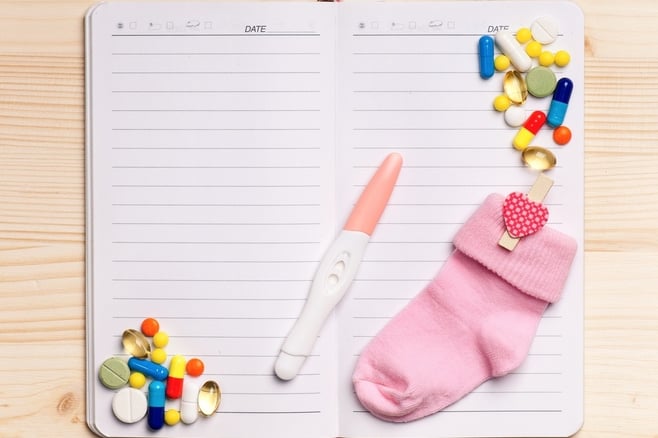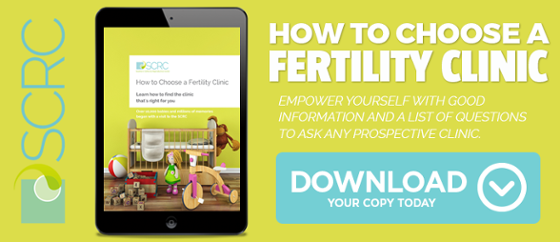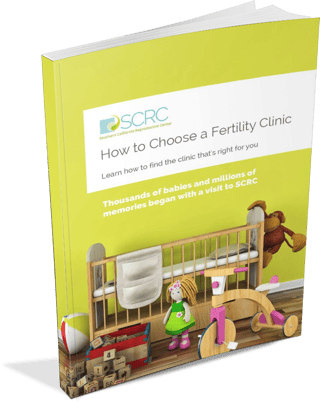
For any IVF patient, the embryo transfer procedure is an exciting and stressful milestone in their fertility treatment. After the weeks of medications and monitoring, the egg retrieval procedure and the anxious wait to see how the embryos develop, this final step of the IVF process is full of potential. Once the embryos has been placed in the uterus, one last thing must happen before a patient is officially pregnant: implantation.
What is embryo implantation?
Implantation occurs when an embryo attaches to the wall of the uterus in the endometrial lining. In IVF, it occurs six to ten days after the egg retrieval process, which is one to five days after the embryo transfer. This equates to days 20 to 24 of an ideal 28 day menstrual cycle.
What affects implantation success rates?
The rate at which embryos successfully implant depends mostly on two factors: the quality of the embryo and the receptiveness of the uterus. Most implantation failures are due to chromosomal abnormalities in the embryo, which explains why implantation rates go down as a woman ages. If a patient suffers from poor egg quality, the resulting embryos may not be healthy enough to implant.
The good news is that using donor eggs can help overcome this problem in many cases. Uterine receptivity can be affected by many things: hormone, thyroid, and autoimmune disorders, an anatomical problem with the shape or positioning of the uterus, or trouble with the endometrial lining. A thorough diagnostic process early in treatment should be able to identify these issues, and there are ways of treating most of these problems before a patient gets to the embryo transfer stage.
Many patients ask what they can do to help implantation, or there are any tips to maximize the chances of embryo implantation after transfer. While it’s difficult to accept that implantation is largely out of your control, it is important to acknowledge that any one action you take is very unlikely to affect whether or not an embryo implants. Being too concerned with affecting implantation causes unnecessary stress at a time when you should be doing your best to relax.
With that said, there are some steps you can take as you prepare for your transfer and after the procedure to give yourself the best possibility of success.
Before embryo transfer
Look into blastocyst transfer
Embryos may be transferred after three to seven days of culturing in the lab. Blastocysts are embryos on the older side of that range, after at least five days of development. New developments in fertility lab technology have made it easier to bring embryos to the blastocyst stage before the transfer procedure.
Transferring blastocysts instead of early-stage embryos allows more time to monitor the embryo’s quality. This allows the specialist to choose the most viable embryos for transfer, improving the chances of implantation success. Blastocyst transfer also more closely mimics the process of a “natural” pregnancy: by day five of a naturally fertilized embryo’s development it would just be leaving the fallopian tubes for the uterus, and the uterine lining should be at its most receptive to implantation at this point.
Consider embryo screening
The genetic testing of embryos prior to transfer is a good way to make sure that the most viable embryos or blastocysts are chosen, which can improve your chances of implantation. Preimplantation genetic screening (PGS) is a technique used to check that embryos have the right number of chromosomes. This allows the embryologist screen for a wide range of genetic mutations known as aneuploidy (missing or extra chromosomes) that could cause implantation failure.
Preimplantation genetic diagnosis (PGD) is used to screen for single-gene disorders, or for chromosomal translocations, where parts of chromosomes are rearranged. PGD is usually performed when a patient is concerned about specific diseases such as:
- Tay Sachs
- Cystic Fibrosis
- Fragile X and other severe genetic disorders
- It will also identify aneuploidy
PGS and PGD are performed in the lab by the embryologist and can be done with very little risk of damage to the embryo.
Investigate the EmbryoScope
If you do not choose to go for genetic testing but still want more insights into the health and development of your embryos as they are cultured in the lab, you may want to look into the use of new time-lapse photography technology. A special incubator called the EmbryoScope takes photos of the embryos every five minutes and puts them together into time lapse films. This means that the embryologist can watch how the cells divide and develop. Recognizing patterns at certain key points during the culturing process can help the lab decide which embryos have the best chance of implanting after transfer.
Ask about assisted hatching
Early stage embryos are enclosed by a very thin membrane known as the zona pellicuda. Before an embryo can implant, it must “hatch” from this covering. There is some evidence that a technique known as assisted hatching may make it easier for an IVF embryo to implant. The procedure takes place in the lab under a high-powered microscope. The embryologist creates a tiny hole in the zona pellicuda, which may improve the implantation rate of the embryo, especially for patients who have a challenging prognosis.
Talk to your doctor about estrogen and progesterone supplementation
Carefully managed hormone supplementation both before and after transfer can help prepare and support the endometrial lining so that the embryo has an ideal environment for implantation and early development.
After embryo transfer
Take it easy
While there’s no evidence that bed rest is beneficial after transfer, finding ways to relax during the dreaded “two week wait” between transfer and your official pregnancy test is good common sense. You have been through so much in the weeks leading up to the transfer, and this is an important time to nurture yourself. Get plenty of sleep and listen to your body: if you want to take a day off to cuddle up on the couch and watch Netflix, go for it. If you feel anxious and want to move around, go for a quiet walk somewhere soothing.
Abstain from vigorous exercise and sexual intercourse
Again, you don’t need to restrict all your normal activities, but high-impact exercise is a bad idea at this point. Your ovaries are likely to still be enlarged and tender at this point and need to be protected, and a hard workout can also stimulate uterine contractions, which you want to avoid for obvious reasons. The same goes for intercourse: some fertility experts have differing opinions on whether it’s a good or a bad idea, but as it can also cause uterine contractions, you may want to stay on the safe side and abstain for a couple of weeks.
Eat as if you’re already pregnant
There are a lot of “implantation diets” and “miracle foods” discussed on the internet, but no real evidence to back up their claims. If you over-focus on one food or group of foods you may be missing out on the balanced nutrition you need to build a healthy baby. The best diet to aid implantation is the same diet you should be eating throughout your treatment and pregnancy: nutritionally balanced with lots of protein, fiber, and vegetables. Avoid foods like high-mercury fish and soft cheeses, and check with your doctor about any vitamins or supplements you should be taking. Of course, avoid all harmful substances such as alcohol, nicotine, and caffeine.
Avoid extremes of temperature
Hot tubs, saunas, hot yoga, or any activity that raises your internal temperature is something to avoid at this point. In general it’s best not to be submerged in water such as pools or baths during this time, as it leaves you vulnerable to infection. Stick to a soothing hot shower until your doctor tells you otherwise.
Lean on your support system
This is the time when your partner, your support group, friends, family, therapist, fertility clinic or even an online community can be invaluable. Anxiety is a terrible thing to live through, and isolation makes it even worse. Don’t try to shoulder your stress alone. Let other people cheer you on as you wait to find out if embryo implantation was successful.
Share this on social media:





